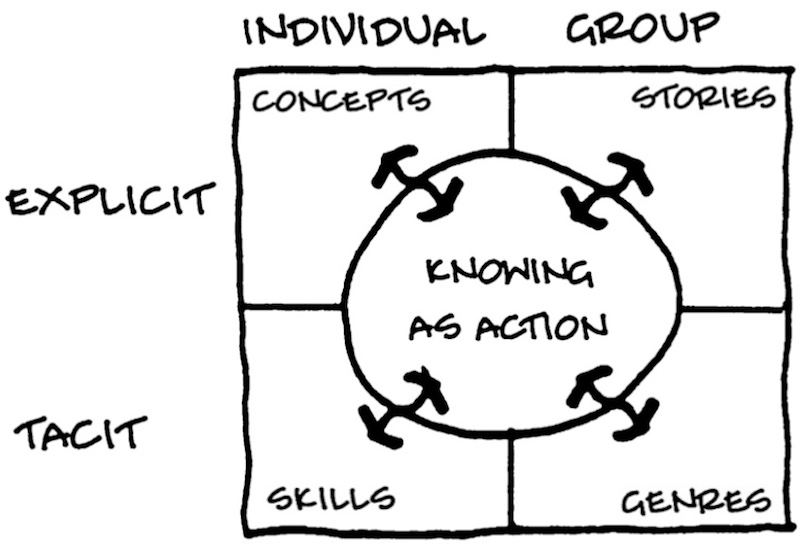Here we consider aspects 'above the line' in the dance of knowing schema.
An effective pattern accomplishes several things.
The first is *conceptualising*: in terms of conditions, human and non-human actors, affiliations and resonances, and crucially, relations of production. Crucially, a pattern is a contaner for rigorous conceptualisation, and a prompt and a resource for rigorous conceptualisation of *here*.
The second is *narrative framing*: in the back-story.
A third is *rigorous abstraction*: arriving at a characterisation of the challenge and its resolution that generalises sufficiently from the particulars of its many instances, and mobilises and evolves **an ontology** that is consistent across patterns, and thus articulates with other patterns as a system of descriptions of *an inhabitable practical world*. The foprop weave furnishes the ontological frame for abstraction.
And fourth - in a sensitive balance with rigorous abstraction - real, rigorous, *poetic* skill: intuiting a coherent, recognisable pattern in a multitude of experiences and in history; finding it an evocative name; and articulating pattern-descriptions in sufficiently poetic language, so that patterns can be ‘sung’ back into the stream of life-practice: in consort . . like a chorus, like a situated improvisation by a well-rehearsed company, like the way that the director of a play might ‘give notes’ after a performance.
Overall, a pattern language needs to be a little formalised: having a workable number of discrete patterns, simply retrievable and connectable with one another through some kind of encoding, with each pattern following a standard format - but carrying unique, evocative and empirical content. ‘Evoking’ is perhaps the basic work that a pattern repertoire needs to be designed to do; so the *dance* across all the quadrants of the dance-of-knowing schema - and practised skill in that dance - is central.
